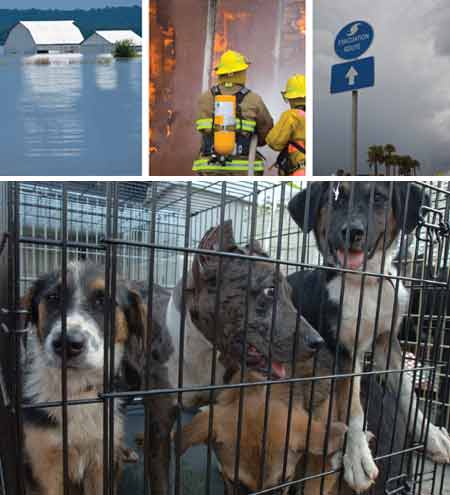When disaster strikes
A comprehensive special report on the role of DVMs in disasters

2011: It's a year to remember. Not only does it rank as veterinary medicine's 250th anniversary, it's also the 10-year anniversary of 9/11. Over the course of this series, DVM Newsmagazine, dvm360.com and CVC Washington, D.C. investigate veterinarians' unique role when facing and responding to natural and man-made disasters.
And while the 2001 terrorist strike on the World Trade Center in New York City was the event that triggered a decade of construction on disaster contingency plans, Hurricane Katrina in 2005 brought pet rescue to the center stage. The series culminates with a special presentation and exhibit hall display this weekend at CVC Washington, D.C. honoring veterinarians and their response to natural and man-made disasters.

Marie McCabe, a veterinarian and a first-responder as a part of the Veterinary Medical Assistance Team (VMAT) sent to Ground Zero in the days after 9/11, didn't know if she would make it out alive. She was face-to-face with the terrorist attack in the rubble of the World Trade Center, and she still suffers the effects of the devastation. The 10-year anniversary is resurrecting many of those buried memories.
A decade later, 9/11 search dogs still admired, studied for lasting effects
They combed through more than a million tons of hazardous debris covering 16 acres with nothing more than a nose to the ground in the days after the Sept. 11, 2001, terrorist attacks on the World Trade Center in New York City. A decade later, about a third of the search-and-rescue dogs remain—most showing little evidence of ill health despite the prolonged exposure to toxic fumes from the pile.
Re-emergence of foot-and-mouth disease (FMD) on American farms may be inevitable, reports a public health expert. Large-scale farming operations, unrestricted animal movement and a shortage of public health and large-animal veterinarians could be creating a perfect storm.

Little was or could be done to control infectious diseases endemic to the Gulf Coast when Hurricane Katrina made landfall in August 2005. In the weeks that followed, rescue organizations and well-intentioned individuals came to the aid of an estimated 600,000 animals, scattering them across the country with little to no documentation or veterinary care. A new study examines what effect their movement had across the country.
Devastating fires don't discriminate and no practice is safe. Read what practice owners who have lost it all have to say about their experience and how they moved on.
Veterinarians share knowledge, supplies with Haiti
Destroyed by an earthquake in January 2010, Haiti is still struggling to recover. But veterinarians like Dr. Lee Ann Berglund-Fosdick are working to help the island nation recover and prosper.
A road to recovery: Flood-stricken practice owner talks about lessons learned
Crossing your fingers and hoping it never happens to you is not an effective disaster management plan. Dr. Jill Burgess, owner of the Animal Hospital of West Nashville, hopes her story will convince other practice owners that disaster preparedness is key.

Disaster preparedness: Planning for the worst, hoping for the best
Even if veterinarians are not ready to invest in the necessary training to help in a response following the next hurricane, disaster planning for a veterinary practice makes good medical and business sense. Veterinary practices are at risk, and it is very likely DVMs could be asked to respond to smaller-scale emergencies locally.
AVMF offers many forms of disaster assistance
Whether a veterinarian has helped animals impacted by disaster or lost it all in a catastrophe, the American Veterinary Medical Foundation (AVMF) has several resources at the DVM's disposal.
FDA approves oral drug for broad canine protection against parasites
October 7th 2024Elanco's lotilaner, moxidectin, praziquantel, and pyrantel chewable tablets (Credelio Quattro) provide a single monthly dose for protection against fleas, ticks, heartworms, roundworms, hookworms, and 3 species of tapeworm.
Read More
dvm360 announces winners of the Veterinary Heroes program
Published: September 6th 2024 | Updated: November 5th 2024This year’s event is supported by corporate sponsor Schwarzman Animal Medical Center and category sponsors Blue Buffalo Natural, MedVet, Banfield Pet Hospital, Thrive Pet Healthcare and PRN Pharmacal.
Read More